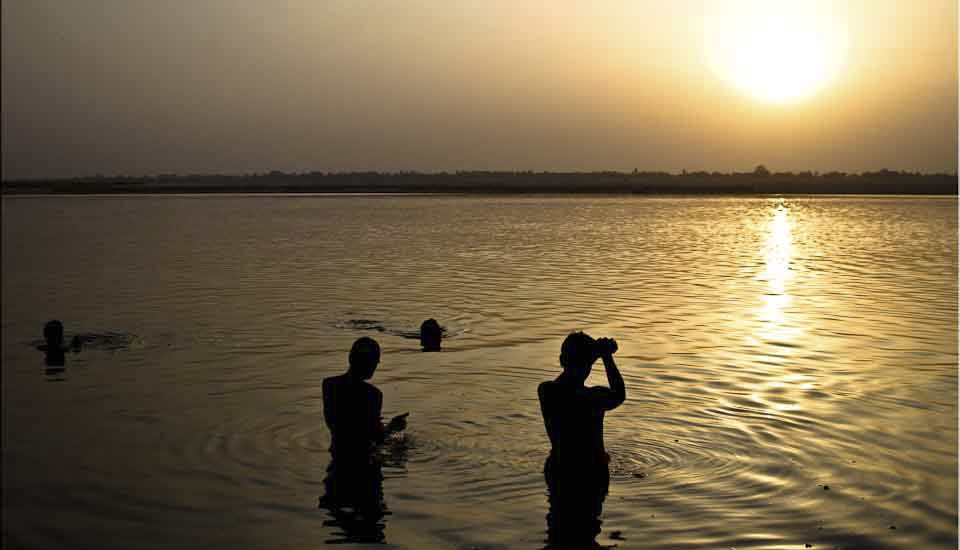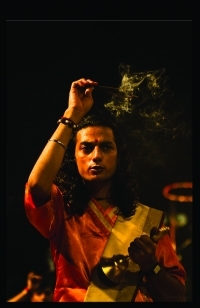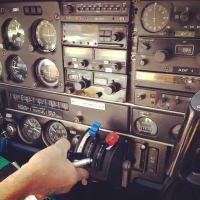.jpg)
According to the guide books, the Mursi people have “an aggressive reputation”.
This fierce reputation is probably what helps them maintain their cultural traditions and their animist practices in the face of the “artificial” geographic boundaries enforced by the Ethiopian state, the tensions between themselves and other tribes, and the onslaught of modern tourism.
That reputation, and their inaccessibility.
Tucked into about 1900 square kilometres of land between the Mago and Omo Rivers, the roughly 7,500 Nilo-Saharan Mursi arrived in their remote corner of southwestern Ethiopia after a series of migrations in search of a “cool place” (bha lalini) for their families and their cattle. To visit their village, I had climbed into a Toyota Land Cruiser at 4.30am to undertake the bumpy drive from Jinka, across Mago National Park, and into Mursi territory.
Four-thirty in the morning is not my favourite hour. But, we were on a Piper Mackay photographic tour under the direction of photographer Ben McRae, and we wanted to catch the light and beat the “tourists”. Depending on the weather, the state of the gravel, and the number of heavy sugar trucks on the road, the journey can take up to two and a half hours. As it happened, the roads had greatly improved, so our Grand Holidays Ethiopia Tours & Travel vehicles got us there in an hour and a half, and we arrived before the sun (or the Mursi tribe) was up.
According to our trip notes, the Mursi are among the most dramatic tribes to photograph, but also the most challenging. I found the whole concept of “pay-for-click” tourism confronting (I’ll come back to discuss this more some other time), but this was our last day in the tribal regions, so I had toughened up and felt ready for almost anything. This cloak of confidence made me proof against extortion: if you are not careful, the price per photograph can double in the course of an hour!
The Mursi are a tall, good-looking people, but part of their pull for tourists is the unique (shared with their cousins the Suri) habit the women have of wearing lip plugs. Back in 2004, anthropologist David Turton was already writing about the tension between outsiders’ attraction to the Mursi to “see” and photograph the the women’s lip plates, and the visitors’ simultaneous revulsion by them. Shauna LaTosky, as part of her doctoral field research into the Mursi, was going to look at the impact of tourism, but turned her study around – and instead examined the significance and meaning of the lip plates to the Mursi women themselves, and how they have taken advantage of the tourists’ fascination to generate income.
There are no easy answers to the questions raised when traditional cultures rub up against modern ways.
I tried to engage with the villagers and to “chat” with them. But, they are very used to the pay-per-shot (or per-shoot, if you are lucky) model, and just clamoured for “Photo! Photo! Photo!”
So, I payed my money and made my pictures.
.jpg)
Sleeping Village
When we arrive at the Mursi Village, it is still quiet. Some fires are smoking, and plastic bottles from the day before litter the ground.
.jpg)

Woman in Warthog Tusks
Both men and women can wear the heavy headdresses of braided twine, metal rings and warthog tusks. They also love chunks of heavy metal on their necklaces. Babies – and flies – are everywhere.

Face Paint and Lip Plates
Traditionally, Mursi girls wear skin skirts, and women receive a second skin (of goat or lesser kudu) to go over one shoulder after they give birth to their first child. Today, most wear a cloth or blanket, with the skins saved for special ritual occasions. The women wear lots of bracelets and elaborate headdresses – this one of cloth and cow horns – but apparently the face paint is an artifice for the tourists.
The women’s most distinguishing feature, of course, is the lip plate. The first incision is made in their lower lips at age 15 or 16, and the lip is stretched out over larger and larger plugs over the next several months. They are not obliged to wear lip plugs, but, as those without them are considered unlucky, ungraceful, impatient and lazy, it is hard to see how girls could resist the social pressure!

Face Paint, Beads, Horns and a Lip Plate
To me, the lip plates look horrendously uncomfortable (the practice has been compared with the wearing of high heels), but the Mursi say it gives a woman a graceful, pleasing gait.



Man with a Gun
The Omo Valley is ruled by cattle raiders, local rituals, and revenge killings: young men earn their scarification “stripes” by killing their enemies. Surprisingly, I was more alarmed by the cavalier handling of the automatic weapons that are everywhere in the villages than I was afraid of being an intentional target. While guns are cheap, bullets are expensive – and dispatching tourists is bad for repeat business!

Young Woman with Scarification
Body art in the Mursi tribe includes extensive scarification: boys get markings on their left shoulder as they pass into manhood; young women get designs across their chests and arms, and then – as I said above – there are special markings for enemies dispatched. All these traditional markings translate into tourist dollars – as demonstrated by the Ethiopian birr tucked into this young woman’s bracelets.


Old Woman in a Headdress
This woman’s headdress of bundled grasses trimmed with metal rings and adorned with warthog tusks and animal hair fascinated me. Traditionally, widows do not put their lip plates in – although they sometimes make exceptions when it comes to making money from tourists.



 I’m a bit overwhelmed by the number of photos I have come away with. Images of heat, flies, dust, and a culture very different from my own, crowd my brain.
I’m a bit overwhelmed by the number of photos I have come away with. Images of heat, flies, dust, and a culture very different from my own, crowd my brain.
 The Mursi truly are an amazing people! I’ll return to the many photos that resulted from that day’s shooting some other time.
The Mursi truly are an amazing people! I’ll return to the many photos that resulted from that day’s shooting some other time.
Until then, walk tall, and Happy Travels!
Photos: 23October2018



















.jpg)


Despite the “pay for photos” dilemma, you ended up with some nice images. I particularly like the side-lit shots.
Thanks, Kevin.
It’s always lovely to have your input!
Cheers, U
[…] remaining tribes to continue to wear lip plates: I’ve shared pictures of these before (see: Meet the Mursi). According to accounts, Mursi men engage in ritualised violence in the form of ceremonial stick […]
[…] tourism, and have posted some of the pictures I “bought” in this Mursi village (see: The Mursi and Mursi Men). One of the biggest problems I had was the transactional nature of the exchanges, […]
[…] of the deliberately underexposed pictures I made of the Mursi people in very bright light (see: Meet the Mursi); I also wanted to work with whited-out backgrounds, and get more practice with off-camera […]